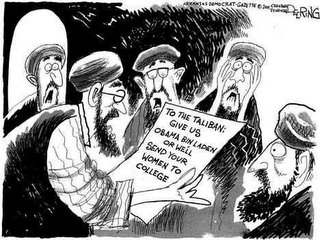Here is an interesting article from http://nanopolitan.blogspot.com
"Yale University's School of Music has received an anonymous $100 million gift that will, among other things, result in free tuition for students, starting next year."
Everytime I see such news stories, I certainly feel happy for the recepient universities. At the same time I feel so sad for Indian universities and other institutions of higher education. Anyone who kept his/her eyes open during the during the last 10 years knows that quite a few industry bigwigs and entrepreneurs who made it big (and there were many during the dot-com boom) donateed big money to the IITs (and probably to other colleges as well, but the news about IITs was really prominent). For example, IIT-B benefited from gifts from its alumni such as Kanwal Rekhi and Nandan Nilekani.
The IITs that received these donations used them to start new programs, notably in management, and for other purposes such as sprucing up their facilities, including their hostels. Everything was going great, until the then Minister of Human Resources Development, Murli Manohar Joshi, intervened, and the rest, as they say is history.
In this case, it was a truly sad history. One particularly dark episode is recounted by Urmi Goswami:
In the summer of 2003, Gururaj Desh Deshpande, co-founder of high-end optical technology company Sycamore Networks, tried in vain to donate $10 million to his alma mater IIT Madars. The purpose of this grant was for his alma mater to undertake an optical research project. His grant was rejected by the ministry of human resources development. Deshpande finally took his money where it was wanted — to the Massachusetts Institute of Technology. The MIT received a grant of $20 million to set up the ‘Deshpande Centre of Technological Innovation’.
Why? Because, gifts to individual institutions became impossible in the new, warped regime imposed by M.M. Joshi. From the same report by Goswami:
In January 2003, a fund -- Bharat Shiksha Kosh -- was set up. All donations made to educational institutions or for educational purposes were to be routed through the BSK. Set up as the brainchild of Murli Manohar Joshi, the Bharat Shiksha Kosh was meant to help channel funds — especially from smaller contributors — to the education sector, particularly the institutes of higher education.
All right. That was then, and this is now. How have things changed? When the regime change took place in May 2004, Arjun Singh, the new minister at the helm at MHRD, immediately changed the rules back to those that existed earlier. Now, people can make donations directly to the institutions of their choice. However, this year, in an announcement about the new scheme (called 'block-grant' schme' -- I don't even know what it means!) for funding IISc, IITs and IIMs, I found this interesting passage:
...The modified scheme will provide a matching contribution to the corpus equalling the net income of the institute, that is income after all expenditure has been met. The scheme would be implemented in all these institutions with the stipulation that the level of corpus may be allowed up to Rs 100 crore in the case of IITs and IISc and Rs 50 crore in respect of other institutions [IIMs].
Please correct me if I am wrong, here. Isn't this passage saying that the corpus (which is the term equilvalent to 'endowment' used in the US) cannot grow to more than 100 crores? Why should there be a cap at all -- except perhaps a cap on the government's contribution?
The US universities get big gifts all the time, and universities build fairly huge endowments with them. Harvard is truly well endowed with some $25 billion in its kitty! Other universities such as Michigan, Cornell and UCLA have endowments of about $3 billion each (info from Satya). Remember, Michigan and UCLA are state universities! They have been using it for all kinds of purposes, such as a new building, new academic programs, establishing a scholarship program, etc. The gift to Yale's School of Music seems to break new ground in that it will go towards waiving the tuition fees for all the students in that school! In times of distress, an endowment is a great stabilizer. One can go on and on, but I am sure you get the point.
I am sure there are still many people who would be willing to donate big money to the corpus funds of higher ed institutions -- IIMs and IITs in particular. A corpus of some 1000 crore (10 billion) rupees should be quite easy to build in a short time for an IIT if it makes a concerted effort; such a corpus would help it become financially independent. In principle, the government can either reduce or even stop its funding of those institutions with big corpus funds, and use the money thus saved to create new IITs, IIMs and so on.
Sure, the corpus funds may not be large now. However, by removing the cap on them, and by encouraging institutions to tap their alumni and other philanthropists, our universities too can benefit from all the good things made possible with a big corpus.
Aren't we missing out on all of this good stuff?














